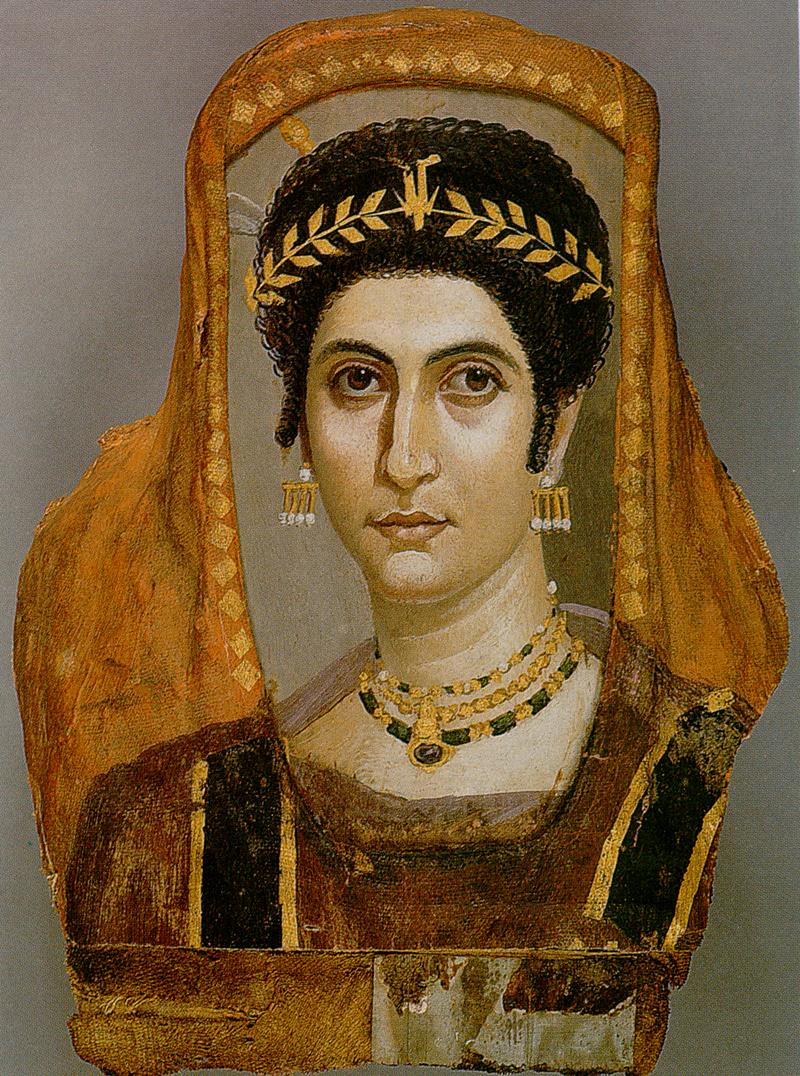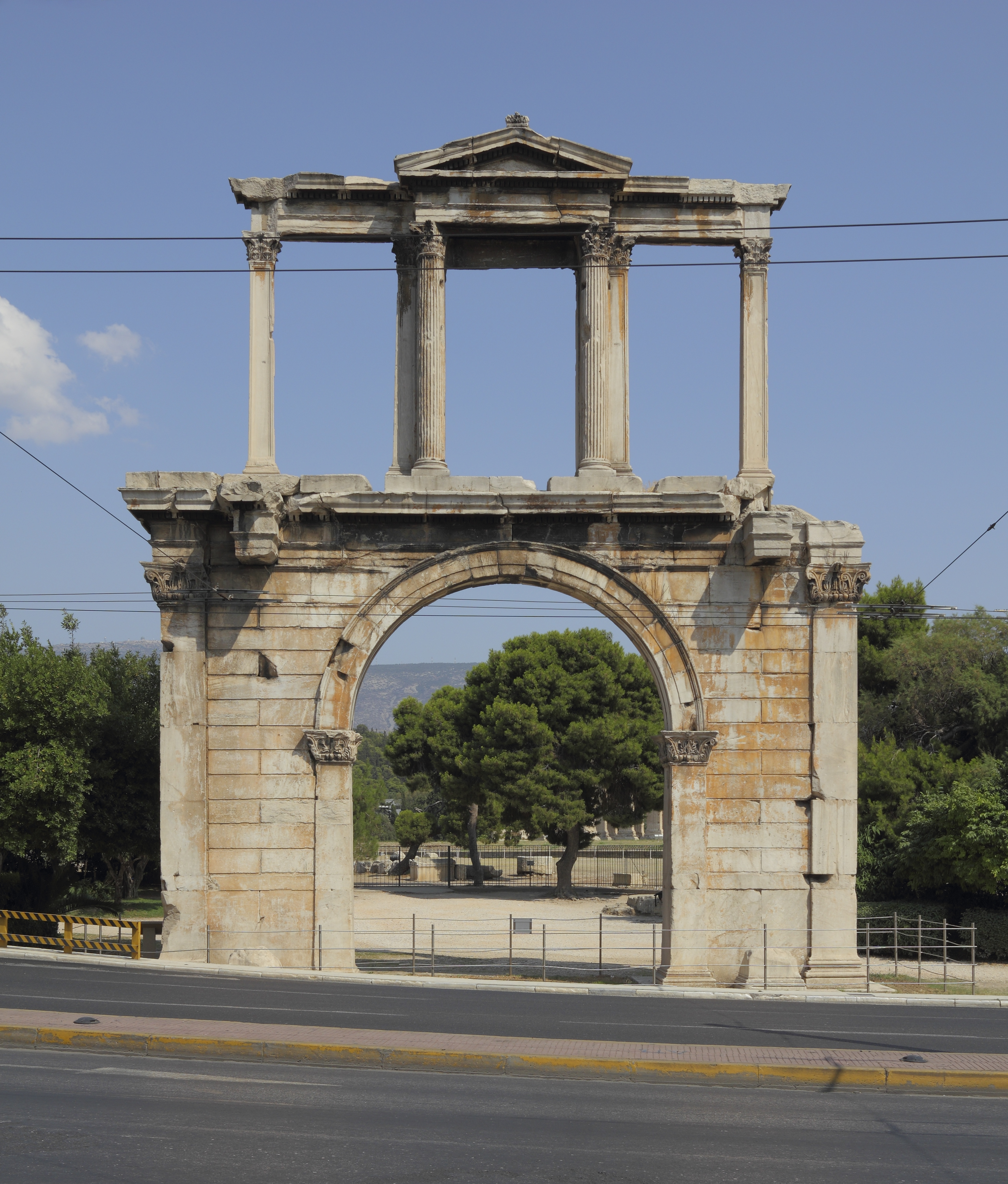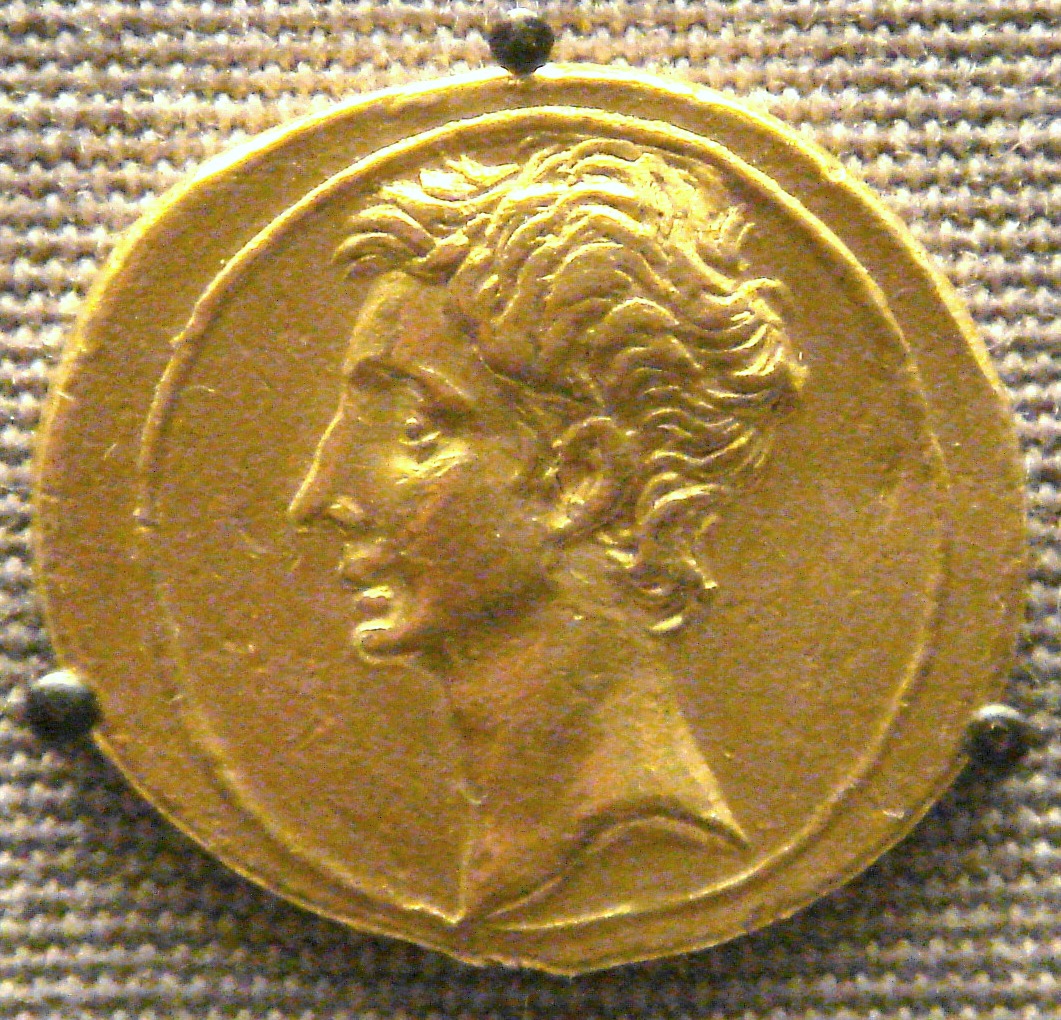|
Osroes I
Osroes I (also spelled Chosroes I or Khosrow I; ''Husrōw'') was a Parthian contender, who ruled the western portion of the Parthian Empire from 109 to 129, with a one-year interruption. For most of his reign he contended with the rival king Vologases III () who was based in the eastern provinces. In 116, Osroes I was briefly ousted from his throne at Ctesiphon during an invasion by Roman emperor Trajan (), who installed Osroes' son, Parthamaspates. After Trajan's death the following year, Osroes I's rule was reinstated by the Parthian nobility. In 129, he was removed from power by Vologases III. Biography In 109, Osroes I revolted against Parthian king Pacorus II () in order to claim the throne for himself. During the reign of Pacorus II's son Vologases III (), Osroes I managed to seize the western part of the empire, including Mesopotamia, while Vologases III ruled in the east. In 113, Osroes I violated the Treaty of Rhandeia with the Romans by deposing Vologases III's ... [...More Info...] [...Related Items...] OR: [Wikipedia] [Google] [Baidu] |
King Of Kings
King of Kings, ''Mepet mepe''; , group="n" was a ruling title employed primarily by monarchs based in the Middle East and the Indian subcontinent. Commonly associated with History of Iran, Iran (historically known as name of Iran, Persia in Western world, the West), especially the Achaemenid Empire, Achaemenid and Sasanian Empires, the title was originally introduced during the Middle Assyrian Empire by King Tukulti-Ninurta I (reigned 1233–1197 BC) and was subsequently used in a number of different kingdoms and empires, including the aforementioned Persia, various History of Greece, Hellenic kingdoms, History of India, India, History of Armenia, Armenia, History of Georgia (country), Georgia, and History of Ethiopia, Ethiopia. The title is commonly seen as equivalent to that of Emperor, both titles outranking that of king in prestige, stemming from the Late antiquity, late antique Roman emperor, Roman and List of Byzantine emperors, Eastern Roman emperors who saw the ''S ... [...More Info...] [...Related Items...] OR: [Wikipedia] [Google] [Baidu] |
Seleucia
Seleucia (; ), also known as or or Seleucia ad Tigrim, was a major Mesopotamian city, located on the west bank of the Tigris River within the present-day Baghdad Governorate in Iraq. It was founded around 305 BC by Seleucus I Nicator as the first capital of the Seleucid Empire, and remained an important center of trade and Hellenistic culture after the imperial capital relocated to Antioch. The city continued to flourish under Parthian rule beginning in 141 BC; ancient texts claim that it reached a population of 600,000. Seleucia was destroyed in 165 AD by Roman general Avidius Cassius and gradually faded into obscurity in the subsequent centuries. The site was rediscovered in the 1920s by archaeologists. Names Seleucia (, ''Seleúkeia'') is named for Seleucus I Nicator, who enlarged an earlier settlement and made it the capital of his empire around 305 BC. It was the largest and most important of the many cities to bear its name but is sometimes distinguished as ... [...More Info...] [...Related Items...] OR: [Wikipedia] [Google] [Baidu] |
Tiara
A tiara (, ) is a head ornament adorned with jewels. Its origins date back to ancient Greco-Roman world. In the late 18th century, the tiara came into fashion in Europe as a prestigious piece of jewelry to be worn by women at formal occasions. The basic shape of the modern tiara is a semicircle, usually made of silver, gold, or platinum and richly decorated with precious stones, pearls, or cameos. Tiaras were extremely popular during the late 19th century and were worn at events where the dress code was white tie. After World War I, wearing a tiara gradually fell out of fashion, except for official occasions at a royal court. Interest in tiaras has increased again since the beginning of the 21st century. The word ''tiara'' is often used interchangeably with the word ''diadem''. Description The basic shape of the modern tiara is a semi-circle, usually made of silver, gold or platinum. Tiaras have also been made from tortoiseshell, coral and quartz, and in the 20th century ... [...More Info...] [...Related Items...] OR: [Wikipedia] [Google] [Baidu] |
Diadem
A diadem is a Crown (headgear), crown, specifically an ornamental headband worn by monarchs and others as a badge of Monarch, royalty. Overview The word derives from the Ancient Greek, Greek διάδημα ''diádēma'', "band" or "fillet", from διαδέω ''diadéō'', "I bind round", or "I fasten". The term originally referred to the embroidered white silk ribbon, ending in a knot and two fringed strips often draped over the shoulders, that surrounded the head of the monarch, king to denote his authority. Such ribbons were also used to crown victorious athletes in important sports games in antiquity. It was later applied to a metal crown (headgear), crown, generally in a circular or "fillet (clothing), fillet" shape. For example, the crown worn by Queen Juliana of the Netherlands was a diadem, as was that of a baron later (in some countries surmounted by three globes). The ancient Celts were believed to have used a thin, semioval gold plate called a ''mind'' (Old Irish) as a ... [...More Info...] [...Related Items...] OR: [Wikipedia] [Google] [Baidu] |
Bunches
A woman with long pigtails and braids. In the context of hairstyles, the usage of the term pigtail (or twin tail or twintail) shows considerable variation. The term may refer to a single braid, but is more frequently used in the plural ("pigtails") to refer to twin braids on opposite sides of the head. Sometimes, the term "pigtails" applies regardless of whether the hair is braided, but there is not widespread agreement on this (in places where this usage is common, unbraided pairs are called doggie ears or bunches and a single bunch, regardless of position on the head, is called a ponytail). Word origin and usage Bedouin woman with pigtails, 1880s. The term pigtail appears in English in the American colonies in the 17th century to describe a twist of chewing tobacco. One of the steps in processing the tobacco was to twist a handful of leaves together to form a compact bunch that would then be cured (dried, either with or without smoking). The term "pigtail" was appl ... [...More Info...] [...Related Items...] OR: [Wikipedia] [Google] [Baidu] |
Parthian Coinage
Parthian coinage was produced within the domains of the Parthian Empire (247 BC – 224 AD). The coins struck by the Parthians were mainly made of silver, with the main currencies being the drachm and tetradrachm. The tetradrachm, which generally weighed around 16 g, was only minted in Seleucia, first conquered by the Parthians in 141 BC. Design-wise, Parthian coinage was based on Seleucid and Achaemenid satrapal coinage. See also * Achaemenid coinage The Achaemenid Empire issued coins from 520 BC–450 BC to 330 BC. The Persian daric was the first gold coin which, along with a similar silver coin, the siglos (from , , '' shékel'') represented the first bimetallic monetary standard.Michael A ... * Sasanian coinage References Sources * * * * * * * * * * * {{Parthian Empire Parthian Empire Ancient currencies ... [...More Info...] [...Related Items...] OR: [Wikipedia] [Google] [Baidu] |
Vologases I Of Armenia
Vologases I of Armenia () or Vagharsh I was a Parthian prince who ruled Armenia from 117 to 140. He was apparently an Arsacid and is described as the "son of Sanatruces" (King of Armenia 88–110) by Cassius Dio. He became king following the end of the brief Roman annexation of Armenia. He is known to have founded the city of Vagharshapat, which served as the capital of Armenia from 120 to 330, and a number of other settlements that bear his name. Although Armenia prospered during his reign, he was forced to appeal to Rome for assistance against an Iberian invasion towards the end of his rule. According to Movses Khorenatsi Movses Khorenatsi ( 410–490s AD; , ) was a prominent Armenians, Armenian historian from late antiquity and the author of the ''History of Armenia (book), History of the Armenians''. Movses's ''History of the Armenians'' was the first attempt at ..., he may have died in battle against the invaders. After his death, the Romans made Sohaemeus the ruler of A ... [...More Info...] [...Related Items...] OR: [Wikipedia] [Google] [Baidu] |
Hadrian
Hadrian ( ; ; 24 January 76 – 10 July 138) was Roman emperor from 117 to 138. Hadrian was born in Italica, close to modern Seville in Spain, an Italic peoples, Italic settlement in Hispania Baetica; his branch of the Aelia gens, Aelia ''gens'', the ''Aeli Hadriani'', came from the town of Atri, Abruzzo, Hadria in eastern Italy. He was a member of the Nerva–Antonine dynasty. Early in his political career, Hadrian married Vibia Sabina, grandniece of the ruling emperor, Trajan, and his second cousin once removed. The marriage and Hadrian's later succession as emperor were probably promoted by Trajan's wife Pompeia Plotina. Soon after his own succession, Hadrian had four leading senators unlawfully put to death, probably because they seemed to threaten the security of his reign; this earned him the senate's lifelong enmity. He earned further disapproval by abandoning Trajan's expansionist policies and territorial gains in Mesopotamia (Roman province), Mesopotamia, Assyria ( ... [...More Info...] [...Related Items...] OR: [Wikipedia] [Google] [Baidu] |
History Of The Jews In Iraq
The history of the Jews in Iraq (, ', ; , ) is documented from the time of the Babylonian captivity . Iraqi Jews constitute one of the world's oldest and most historically significant Jewish communities. The Jewish community in Mesopotamia, known in Jewish sources as "Babylonia", traces its origins to the early sixth century BCE, when a large number of Judeans from the defeated Kingdom of Judah were exiled to Babylon in several waves by the Neo-Babylonian Empire. A few decades later, some had returned to Judah, following the edict of Cyrus. During this time, the Temple in Jerusalem Second Temple, was rebuilt, significant changes in Jewish religious tradition were made, and the Judeans were led by individuals who had returned from Babylonia, such as Zerubbabel, Ezra and Nehemiah. Though not much is known about the community in Babylonia during the Second Temple period, Second Temple and Tannaim, Mishnaic periods, scholars believe the community was still thriving at that time. Th ... [...More Info...] [...Related Items...] OR: [Wikipedia] [Google] [Baidu] |
Babylonia
Babylonia (; , ) was an Ancient history, ancient Akkadian language, Akkadian-speaking state and cultural area based in the city of Babylon in central-southern Mesopotamia (present-day Iraq and parts of Kuwait, Syria and Iran). It emerged as an Akkadian-populated but Amorites, Amorite-ruled state . During the reign of Hammurabi and afterwards, Babylonia was retrospectively called "the country of Akkad" ( in Akkadian), a deliberate archaism in reference to the previous glory of the Akkadian Empire. It was often involved in rivalry with the older ethno-linguistically related state of Assyria in the north of Mesopotamia and Elam to the east in Ancient Iran. Babylonia briefly became the major power in the region after Hammurabi (floruit, fl. –1752 BC middle chronology, or –1654 BC, short chronology timeline, short chronology) created a short-lived empire, succeeding the earlier Akkadian Empire, Third Dynasty of Ur, and Old Assyrian Empire. The Babylonian Empire rapidly fell apar ... [...More Info...] [...Related Items...] OR: [Wikipedia] [Google] [Baidu] |
Aureus Of Trajan
The ''aureus'' ( ''aurei'', 'golden') was the main gold coin of ancient Rome from the 1st century BC to the early 4th century AD, when it was replaced by the ''solidus''. This type of coin was sporadically issued during the Republic and standardized during the Empire, originally valued at 25 silver ''denarii'' and 100 ''sestertii''. It was about the same size as the ''denarius'', but heavier than the ''denarius'' since gold is denser than silver. During the Republic The production of proper Roman coins began in the 3rd century BC and was limited to the minting of bronze ''asses''; the gold brought back from spoils and war indemnities was stored in the public treasury (''Aerarium''). According to the needs of the state finances, the gold in the reserve was sold for minted silver, at a ratio of 1 to 12. The Second Punic War (218–201), due to its considerable financing needs, made it necessary to draw on the reserves of precious metal. Rome therefore issued silver ''denarii'' a ... [...More Info...] [...Related Items...] OR: [Wikipedia] [Google] [Baidu] |







